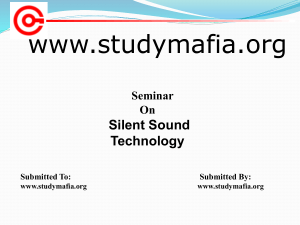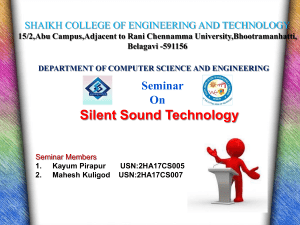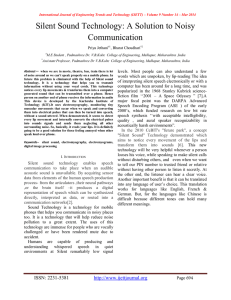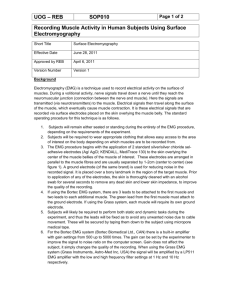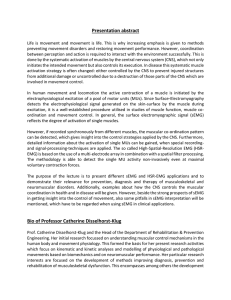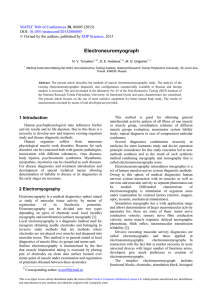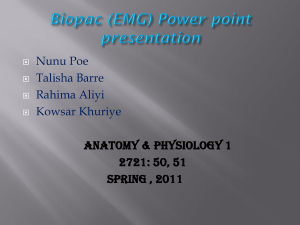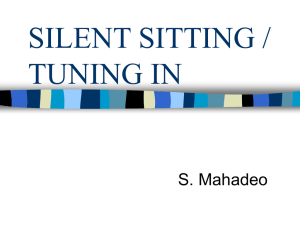silent sound technology
advertisement
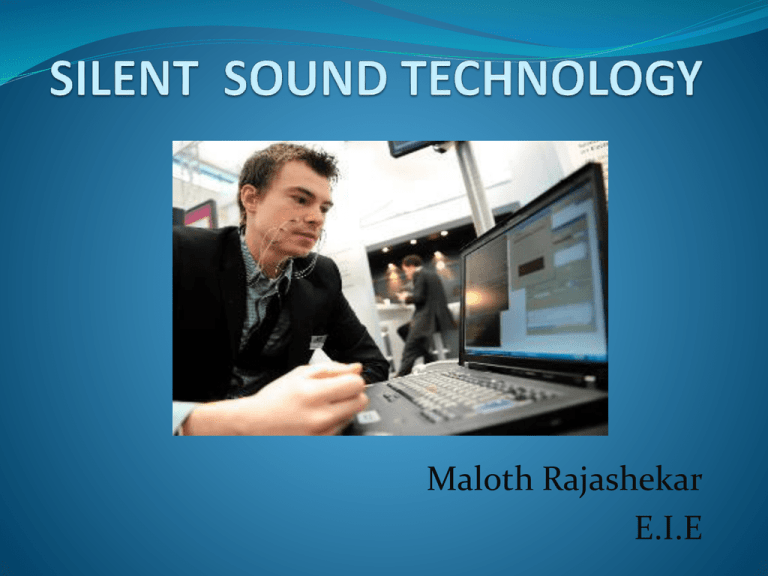
Maloth Rajashekar E.I.E What it is……..? It is a technology that helps you to transmit information without using your vocal cords. This technology aims to notice lip movements & transform them into a computer generated sound that can be transmitted over a phone. Hence person on other end of phone receives the information in audio. ORIGINATION Humans are capable of producing and understanding whispered speech in quiet environments at remarkably low signal levels. Most people can also understand a few unspoken words by lip-reading The idea of interpreting silent speech electronically or with a computer has been around for a long time, and was popularized in the 1968 Stanley Kubrick science-fiction film ‘‘2001 – A Space Odyssey” A major focal point was the DARPA Advanced Speech Encoding Program (ASE) of the early 2000’s, which funded research on low bit rate speech synthesis ‘‘with acceptable intelligibility, quality, and aural speaker recognizability in acoustically harsh environments”, Recent events This year at Cebit, one of the largest trade fair, a new concept called “ SILENT SOUND TECHNOLOGY “ was demonstrated. This technology is being developed by scientists of Karlsruhe Institute of Technology ( KIT ), Germany. hOW WE sPEaK……….? When we generally speak aloud, air passes through larynx & the tongue. Words are produced using articulator muscle in the mouth & jaw region. Now imagine a technology that could allow everyone to make phone calls, and talk, without making a sound….. Serene, peaceful & heavenly. Recently, its proved that the articulator muscle become active irrespective of whether air passes through them or not. Even by saying words without producing sound, weak electric currents are sent from your brain to the speech muscle. These electrical signals are known as ELECTROMYOGRAMS. ELECTROMYOGRAPHY It is a technique which monitors tiny muscular movements and pulses generated by it . The transducers involved converts the pulses into electric signals . Electromyographic sensors attached to the face records the electric signals produced by the facial muscles, compare them with pre recorded signal pattern of spoken words . When there is a match that sound is transmitted on to the other end of the line and person at the other end listen to the spoken words Surface electromyography (sEMG) based speech recognition Surface ElectroMyoGraphy (sEMG) is the process of recording electrical muscle activity captured by surface (i.e., non-implanted) electrodes. When a muscle fiber is activated by the central nervous system, small electrical currents in the form of ion flows are generated. These electrical currents move through the body tissue, whose resistance creates potential differences which can be measured between different regions on the body surface. SILENT SPEECH INTERFACES IN INTERFACEING WE USE FOUR DIFFERENT KIND OF TRANSDUCERS Vibration sensors Pressure sensor Electromagnetic sensor Motion sensor APPLICATION As we know in space there is no medium for sound to travel therefore this technology can be best utilised by astronauts. We can make silent calls even if we are standing in a crowded place. This technology is helpful for people without vocal cord or those who are suffering from Aphasia (speaking disorder ). This technology can be used for communication in nasty environment. To tell a secret PIN no. , or credit card no. on the phone now be easy as there is no one eavesdrop anymore. Since the electrical signals are universal they can be translated into any language. Native speakers can translate it before sending it to the other side. Hence it can be converted into any languageof choice currently being German, English & French. RESTRICTIONS Translation into majority of languages but for languages such as Chinese different tone holds different meaning, facial movements being the same. Hence this technology is difficult to apply in such situations. From security point of view recognising who you are talking to gets complicated. Even differentiating between people and emotions cannot be done. This means you will always feel you are talking to a robot. This device presently needs nine leads to be attached to our face which is quite impractical to make it usable. FUTURE PROSPECTS Silent sound technology gives way to a bright future to speech recognition technology from simple voice commands to memorandum dictated over the phone all this is fairly possible in noisy public places. Without having electrodes hanging all around your face, these electrodes will be incorporated into cellphones . It may have features like lip reading based on image recognition & processing rather than electromyography. Nano technology will be a mentionable step towards making the device handy. CONCLUSION Engineers claim that the device is working with 99 percent efficiency. It is difficult to compare SSI technologies directly in a meaningful way. Since many of the systems are still preliminary, it would not make sense, for example, to compare speech recognition scores or synthesis quality at this stage. With a few abstractions, however, it is possible to shed light on the range of applicability and the potential for future commercialization of the different methods. THANK YOU
